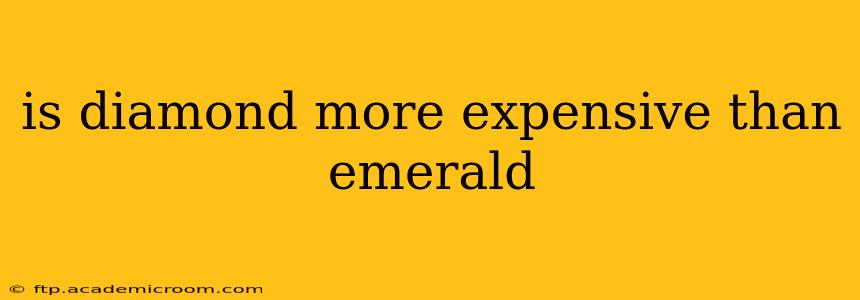The question of whether diamonds are more expensive than emeralds is not a simple yes or no. The price of gemstones, including diamonds and emeralds, is determined by a complex interplay of factors. While diamonds are often perceived as inherently more valuable, the reality is that a high-quality emerald can easily surpass the cost of a comparable diamond. Let's break down the key factors influencing the price of each gemstone:
What Factors Determine Diamond Prices?
The "4Cs"—cut, clarity, carat, and color—are the foundation of diamond grading and directly impact price.
-
Cut: Refers to how well the diamond's facets interact with light, affecting its brilliance, fire, and scintillation. An expertly cut diamond will be significantly more expensive than a poorly cut one, even if they have the same carat weight and clarity.
-
Clarity: Indicates the presence of inclusions (internal flaws) and blemishes (external flaws). Flawless diamonds are exceedingly rare and command top prices. The fewer inclusions and blemishes, the higher the clarity grade and price.
-
Carat: This measures the diamond's weight, with one carat equaling 0.2 grams. Larger diamonds are generally more expensive than smaller ones, but the price per carat increases disproportionately as size increases.
-
Color: Diamonds are graded on a scale from D (colorless) to Z (light yellow or brown). Colorless diamonds are highly sought after and more expensive than those with noticeable color.
What Factors Determine Emerald Prices?
Emeralds, being a variety of beryl, are judged on different criteria, although size still plays a significant role.
-
Color: The most crucial factor for emeralds is their color. Intense, vibrant green is highly valued. Slight variations in hue, saturation, and tone can dramatically impact price. A deep, rich green, often described as "pigeon blood" green, commands the highest prices.
-
Clarity: Unlike diamonds, inclusions are almost always present in emeralds. However, the type and nature of the inclusions matter. While some inclusions can negatively affect transparency, others are considered characteristic of the gemstone, adding to its unique beauty. Completely flawless emeralds are extremely rare.
-
Cut and Carat: Similar to diamonds, the cut of an emerald influences its brilliance and the way it reflects light. Larger emeralds are generally more expensive. However, the impact of carat weight on price is less predictable in emeralds than in diamonds due to the rarity of larger, high-quality stones.
-
Treatment: Many emeralds undergo treatments to enhance their color and clarity. While these treatments are common and often accepted, they can affect the gemstone's value, especially if undisclosed.
So, Which is More Expensive: Diamond or Emerald?
Ultimately, there's no definitive answer. A high-quality, large, intensely colored emerald can easily cost more than a diamond of similar size and quality. Conversely, a flawless, large, colorless diamond will typically command a higher price than most emeralds. The price depends entirely on the specific characteristics of each gemstone.
What are the average prices of diamonds and emeralds?
Average prices vary greatly depending on the factors discussed above. There's no single average price for either gemstone. A small, low-quality diamond might cost a few hundred dollars, while a high-quality, large diamond could cost hundreds of thousands or even millions. Similarly, a small, low-quality emerald might be relatively inexpensive, whereas a top-quality, large emerald can be incredibly valuable.
Are diamonds always more valuable than emeralds?
No, diamonds are not always more valuable than emeralds. The value of a gemstone depends on its individual characteristics and market demand. A rare, exceptionally beautiful emerald can significantly exceed the value of a comparable diamond.
Which gemstone is better for investment?
Both diamonds and emeralds can be considered investment-grade gemstones, but the market for each is different. The diamond market is generally more established and liquid, making it easier to resell. However, the value of both gemstones depends heavily on the specific stone's characteristics and market trends. Expert advice from a gemologist is crucial for investment purposes.
In conclusion, the relative cost of diamonds and emeralds is highly variable and dependent on numerous factors impacting each gemstone's quality and desirability. Careful consideration of these factors is crucial when comparing prices and making a purchase.
